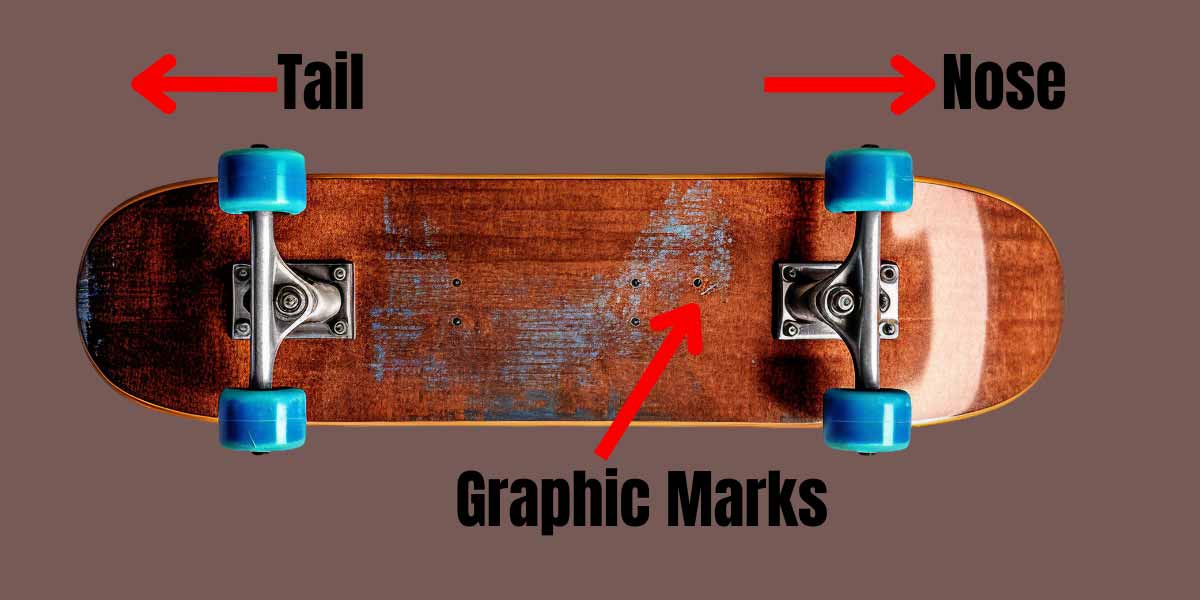Before dropping the skateboard for riding, many skateboarders get confused to find the front side or back side. I believe it has happened to all skateboarders several times. Even experienced skaters also get confused. But especially beginners face the problem mostly. At the very beginning, they also ask, “Do skateboards have a front and back?”The answer is simply “Yes”.
The skateboards have a frontside, which is called the nose. Also, these have a backside and it is called the tail. The skateboard nose is the wider, steeper curve for popping and tricks. The skateboard nail is a narrower, longer curve for stability and balance. Usually, the front foot is placed on the nose and the back foot is placed on the tail.
7 Simple Ways to Identify The Skateboard Nose and Tail
A couple of ways can help you to tell the nose and tail apart on a skateboard. I am providing here seven simple ways so that you can choose the best one for you.
- Check for graphics or logos on the deck
- Examine the concave shape of the deck.
- Check the Grip Tape
- Locate the kicktail
- Look for signs of wear and tear
- Use different colored wheels and hardware
- Mark with a simple marker pen
Check For Graphics or Logos on the Deck
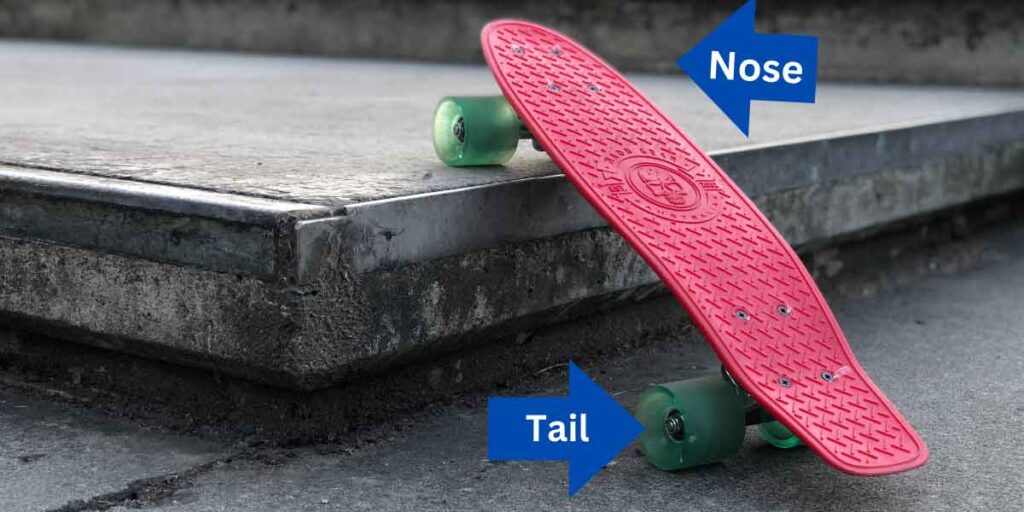
Almost all skateboards have graphics or logos except the white ones. These graphics are usually heat-transferred and cover the full skateboard deck. Manufacturers often place graphics with the intended forward direction. By taking the benefit of it you can easily determine the frontside and backside of skateboards.
Examine the Concave Shape of the Deck
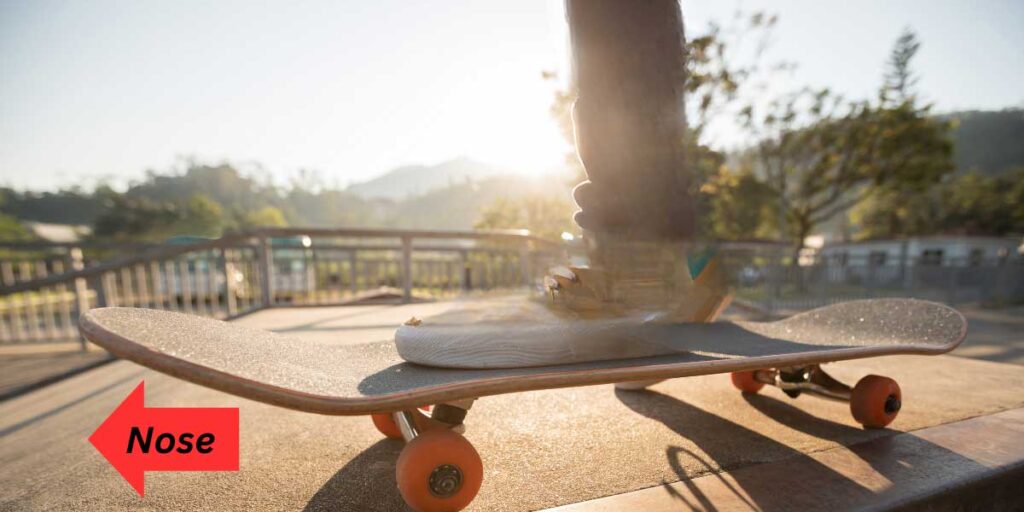
Look closely at the board. The nose is usually slightly wider and longer than the tail. The nose has a steeper curve for popping and tricks. Whereas skateboard nail has a narrower, longer curve for stability and balance. In comparison to the tail, the nose might have a slightly sharper angle.
You will be able to see the curve difference if you put your skateboard on an even surface. In this way, this will help you determine the nose of a skateboard or the back of a skateboard.
Check the Grip Tape
Different brands have various strategies. Most of the manufacturers have different grip tape patterns on the nose and tail. The nose of a skateboard often has a more detailed design, while the tail might be simpler.
Locate the Kicktail
The kicktail is the end part of a skateboard. If you find a kicktail it means that you have got the backside(tail) of a skateboard. But beginners can’t identify the kicktail easily. I have seen that many experienced skateboarders couldn’t identify at the first chance.
Look for Signs of Wear and Tear
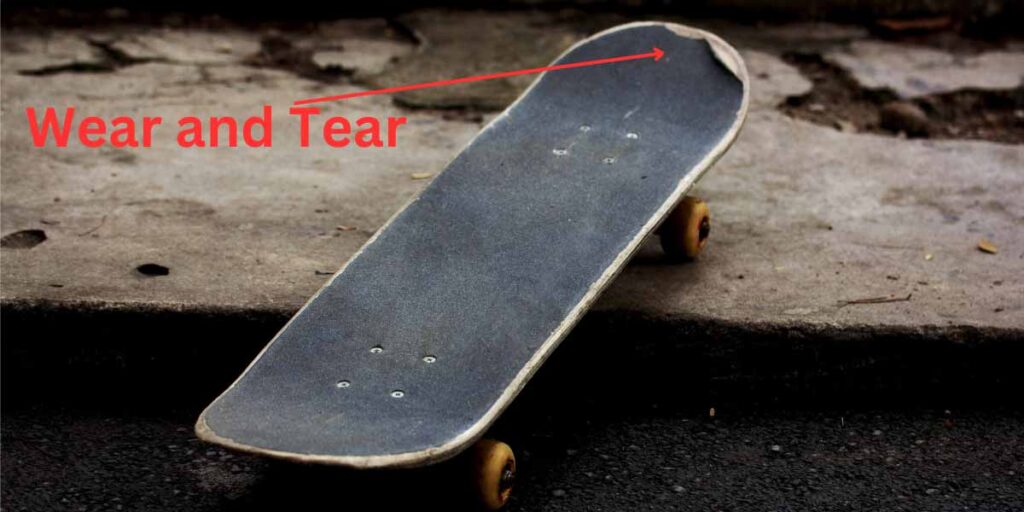
Examine the skateboard or longboard deck for wear and tear. As a result of more abrasion during tricks like flip tricks, the tail is slightly more worn than the nose. You just need to be more careful to see the signs. You can also scratch your nose at the end and see if it helps.
Use Different Colored Wheels and Hardware
It is one of the practical solutions to identify the nose and tail of a skateboard. You can use a similar color for the front side wheels or hardware like nuts and bolts. And another color for the backside wheels or hardware. The combination of colors depends on you. The colors will fade off after a certain time or riding more. That’s why Hardware colors are preferable to the wheel’s colors.
Besides these, you can also use different colored nose and tail guards for your skateboards.
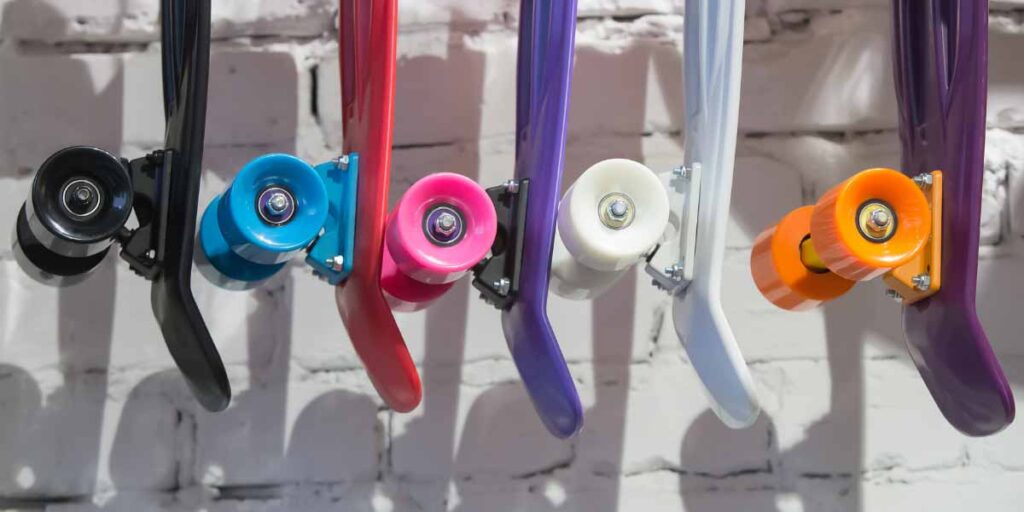
You just need to memorize the color. However, after a certain time, it doesn’t need to be done because your brain will automatically catch the color.
Mark with a Simple Marker Pen
This is the most practical and easiest way. With the heading, you have already understood what you need to do.
You just need to take a marker and find your preferred place. Then mark the nose and tail of your skateboard. This is the cheapest solution ever. You can make a circle, a square, or any shape you desire.
Skateboard Nose and Tail Difference
Knowing the difference between the skateboard nose and tail will enhance your skateboarding experience and help you progress faster. Here is a table of the skateboard nose vs skateboard tail:
| Aspect | Skateboard Nose | Skateboard Tail |
| Shape | Slightly wider and steeper | Slightly smaller and less steep |
| Concave | May have a unique concave near the nose | Similar concave but generally less pronounced |
| Kick | A Steeper kick for lifting the front | Kick is present for popping the board off the ground |
| Common tricks | Ollies, nollies, nosegrinds | Kickflips, shuvits, backside pops |
| Landing tricks | Land with the front foot first | Land with back foot first |
The differences will help you to understand the basics of skateboard nose and tail, Placing your foot on the right side affects the tricks and maneuvers in skateboarding.
Twin Tail Skateboards
Twin tail decks offer a unique riding experience for skaters who want freedom an expression on skateboarding. At first glance, a twin tail might seem like a regular skateboard cut in half. When you inspect them closely, you’ll find subtle design elements that accommodate their versatile nature. Twin tail decks are almost completely symmetrical. The nose and tail are the same in size, angle, and shape.
- Symmetrical shape: These skateboards allow you to ride in both directions without compromising performance.
- Continuous concave: Twin tail skateboards ensure consistent feel and control throughout the board.
Does Nose and Tail Really Matter in Skateboarding?
The short answer will be YES, the nose and tail of a skateboard absolutely matter. Whenever you do skateboarding, tricks, and maneuvers, you need to put the required pressure on the right side of the skateboard.
At a glance, you will see the nose and tail of a skateboard are the same. But when you are exploring a skateboard you will see that there are some differences. These differences really matter.
On a regular concave skateboard, the skateboard nose and tail are almost similarly or symmetrically shaped. Anyone can do the same tricks smoothly by using both sides.
Different types of skateboard decks are designed for executing various tricks. For a penny board or cruiser board the nose is flat and pointed.
Skateboards are typically designed with a directional shape. For better control and stability, you need to ride in the correct direction.
The weight of skateboards is distributed according to the nose and tail. Skaters shift their weight towards the nose and tail during different maneuvers.
Does Nose and Tail really matter in skateboarding? In summary, the answer to this question is Yes, they do matter. They influence directional control, trick performance, weight distribution, and overall functionality. Skaters sometimes do their preferences for specific nose and tail shapes based on their style and the types of tricks.
The Final Words
Question at the start of the article, Do skateboards have a nose and tail? Or Is there a front and back of a skateboard? The frontside of the skateboard is called the nose and the backside of the skateboard is called the tail. I hope I have given valuable information to get rid of your confusion. Remember the simple ways to easily understand the differences between them. Happy skating and stay safe.

